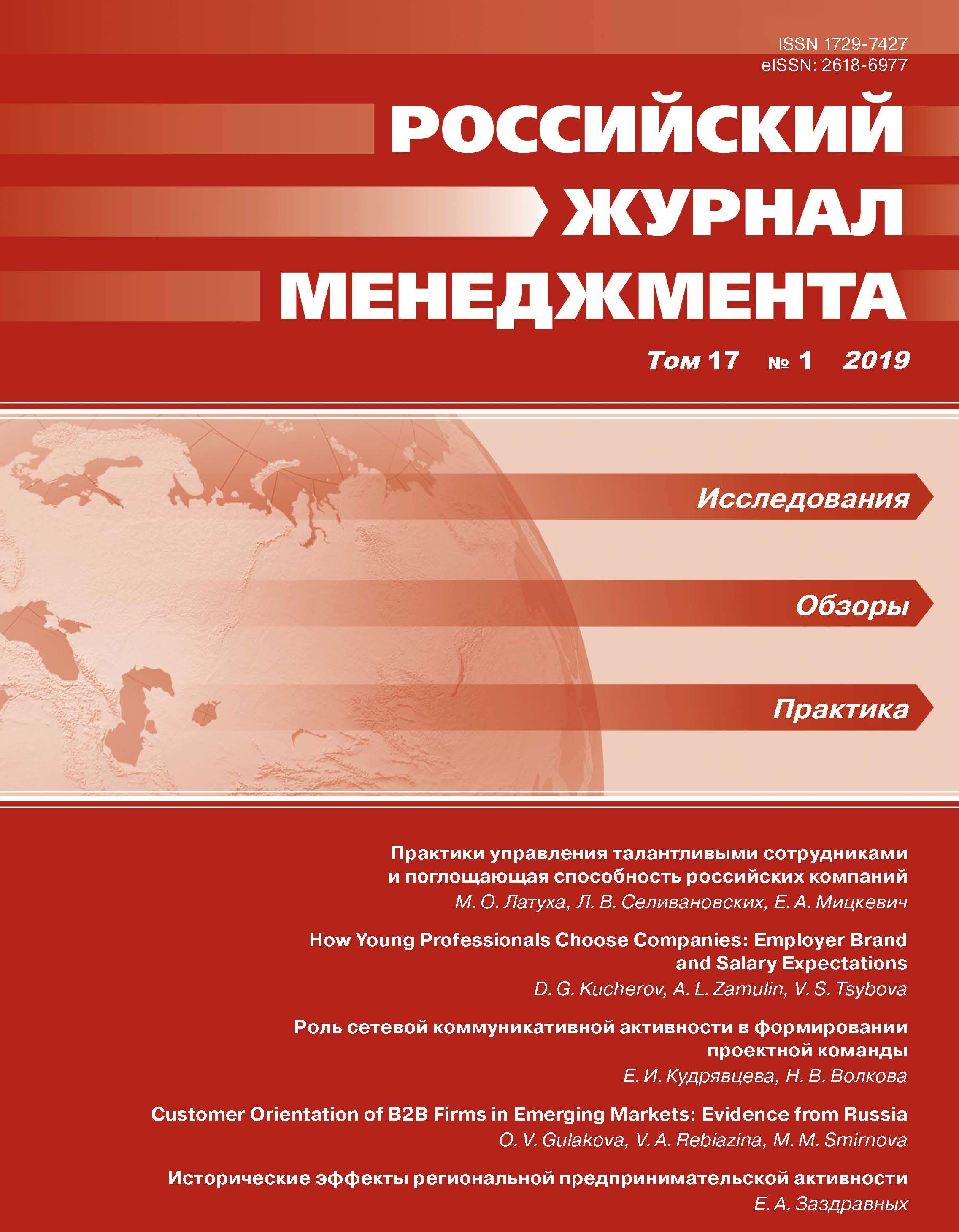Практики управления талантливыми сотрудниками и поглощающая способность российских компаний
DOI:
https://doi.org/10.21638/spbu18.2019.101Аннотация
В статье рассматривается взаимосвязь между управлением талантливыми сотрудниками и поглощающей способностью российских компаний. В работе предлагается теоретическая модель, которая связывает ключевые практики управления талантами (привлечение, развитие и удержание талантов) с основными измерениями поглощающей способности компании: приобретением и усвоением знаний (потенциальная поглощающая способность), трансформацией и использованием знаний (реализованная поглощающая способность). С помощью множественного линейного регрессионного анализа данных по 60 российским компаниям проверяется ряд гипотез о наличии и характере этой взаимосвязи, тем самым доказывается применимость предложенной модели. В результате исследования установлено, что в контексте России практики управления талантливыми сотрудниками, в особенности практики развития талантов, играют ключевую роль в развитии поглощающей способности компании.
Ключевые слова:
использование знаний, поглощающая способность компании, практики управления талантливыми сотрудниками, привлечение талантов, приобретение знаний, развитие талантов, российские компании, трансформация знаний, удержание талантов, усвоение знаний
Скачивания
Библиографические ссылки
REFERENCES IN LATIN ALPHABET
Translation of references in Russian into English
Загрузки
Опубликован
Как цитировать
Выпуск
Раздел
Лицензия
Статьи журнала «Российский журнал менеджмента» находятся в открытом доступе и распространяются в соответствии с условиями Лицензионного Договора с Санкт-Петербургским государственным университетом, который бесплатно предоставляет авторам неограниченное распространение и самостоятельное архивирование.





